Reviews
Howard Hawks
USA, 1928
Credits
Review by Ian Johnston
Posted on 12 February 2009
Source Grapevine Video DVD
Categories The Silence After Sound: Hollywood’s Last Silent Movies
As a title, A Girl In Every Port is a bit of a misnomer. This story of seaman Spike Madden’s travels around the world - we follow him to Amsterdam, Buenos Aires, Central America, and France - seems to promise a comic travelogue, as Spike consults his little black book and tracks down his romantic/sexual companion for whatever port he may have ended up in. This comic tone is set from the start with the scenes in Amsterdam, the first port Spike visits. His former “girl” now turns out to be a hausfrau with a brood of youngsters and a portly pipe-smoking husband—and when Spike turns his attentions to a passing beauty, he literally walks into a policeman on his beat; the way they stumble around one another is a comic actualisation of the forces out to frustrate Spike in his sexual pursuits.
But in fact the film shows very little interest in the port girls of the title. They’re stereotyped and - until the appearance of Louise Brooks in the last part of the film - essentially undifferentiated, mere notches in Spike’s belt (or on his bedpost—in this pre-Production Code time the film, while never crassly explicit, makes no bones about the fact that Spike’s in pursuit of sex). Instead, the whole drive of the narrative is to bring together as intimate friends the two sexual rivals, Spike and Bill. A Girl In Every Port is a comic buddy movie that proposes that the bonds between two men are deeper and stronger than anything that can develop between one of those men and a woman.
In this respect A Girl In Every Port is an early sketch of the classic Hawksian world of masculine values: male friendship, male rivalry, male community. Here, the misogyny that underpins that world is more apparent as the narrative offers no opportunity, such as occurs in later classic Hawks films, for a woman to join that male world. There are no characters like Ceiling Zero’s Tommy, Only Angels Have Wings’ Bonnie, or To Have and Have Not’s Slim, women who are admitted into the world of male camaraderie, even if it’s strictly on the men’s terms. In A Girl In Every Port women are consistently excluded, whether they’re disposable, replaceable easy lays, or, more seriously, a threat that can dissolve the male friendship.
The film falls into three distinct movements. In the first, Spike turns his attentions from his list of girls to tracking down the unknown rival who is getting to them first. In the second, Spike finally meets up with Bill, and their initial fisticuffs and brawling develop into a close partnership. And in the third, that partnership is then threatened by Spike’s love for a gold-digging fairground performer.
There’s a casual, natural ease to the early scenes of the schooner at sea and Spike’s wanderings in the streets of Amsterdam, but this is all a set-up for Spike’s discovery of his dilemma. This is that a rival is sleeping with these girls before him and leaving a memento with them of a bracelet decorated with a ship’s anchor. “I’m tired of finding his heart and anchor mark on my women!” Spike complains and storms off, abandoning his attempts at seduction.
At this distance in time there’s no real point in taking issue with the sexual double-standards that Hawks blithely promotes in the film. Spike quite happily sleeps his way around the world but the women are expected to keep themselves just for him, holding themselves in readiness for his next appearance; or, they’re simply dropped because they’ve had a lover before him, as is the case with his Amsterdam pick-up. In the role of Spike Victor McLaglen’s occasional furious mugging - to be sure, he never was a subtle actor - does add a comic ridiculousness to his behaviour, but there’s no sense that the film is ever adopting a distanced or critical perspective on him.
When the scene changes to the next port, Rio de Janeiro, the same pattern is repeated as Spike discovers his rival has been with “his girl” before him, this time leaving the anchor bracelet on her garter. So, when Spike finally meets up with his rival in the next setting, an imprecise generic-Central-American one, this inevitably descends into a brawl. Your enjoyment of this will relate to your degree of appreciation of comic fights in Hollywood films—mine is limited, not helped by an association of Victor McLaglen, as the brawling Irishman in the cavalry pictures, with the most tedious aspect of John Ford’s work. Still, it’s nicely done; I particularly like the sudden cut Hawks makes to an overhead shot as Spike is restrained by the club’s waiters.
Spike and Bill’s friendship is cemented in their joint allegiance against the cops that try to break up their fight. There’s a constant comic switching here between their willingness to help each other out in fighting the cops and their attempts to return to swinging blows at one another. But they already recognise a true companion in the other—Spike pays Bill’s fine to get him out of jail, and Bill rescues Spike from the water after they both fall off the quay in a continuation of their brawl. And there’s a nice touch in how the track that follows them arm-in-arm down the street in a pretence of friendship for the eyes of the police is then rhymed by a subsequent track of their feet only, weaving drunkenly down the street, an image of true friendship.
Spike and Bill are now an inseparable couple—and make what you will of the fact that Bill, in leaving an impression of his ring on Spike’s chin, marks Spike with his ship’s anchor just as he did the long line of women before they met up; or that from this point Spike ritualistically jerks one of Bill’s fingers every time the latter’s been in a fight. At any rate, this close friendship is soon under threat by a far stronger and more individualised female character than we’ve seen so far.
This is “Mam’selle Godiva”, who Spike meets when she performs her high-diving act at a Marseilles fairground, and she’s played by the incomparable Louise Brooks. It was her appearance here in A Girl In Every Port that brought her to G. W. Pabst’s attention and to her two great roles in his Pandora’s Box and Diary of a Lost Girl. In Hawks’ film you can see what attracted Pabst; there’s a subtle, unforced, and luminous quality to her performance. Just consider the scene where she and Spike meet on a park bench, and look at the way Brooks’ face is constantly alive, her eyelids lowered and raised again, her face shifting to one side and the other. Whether this was instinctive or deliberate on Brooks’ part, the end result is a performance so resolutely modern that she seems rather out of place in the film.
It’s the limitation of A Girl In Every Port (and, for that matter, of Hawks’ masculinist world-view, especially here) that the film treats Brooks’ character so conventionally. Mam’selle Godiva turns out to be a standard gold digger, someone Bill even knew (i.e. slept with) before as Tessie at Coney Island. It even turns out that she has his anchor tattooed on her arm. She’s making a transparent play for Spike’s money and a simultaneous play, hand lighting on his thigh, for the more handsome Bill. One of the intertitles makes the issue crystal clear: “A ship divided by water from land—friends divided by a woman.” And Bill makes his own stance equally clear when he rejects her with: “That big ox means more to me than any woman.” Louise Brooks drops out of the film as it reaches its climax with Spike and Bill re-uniting as a couple in typical comic-brawling form—Spike saves Bill from an outnumbered fight, then knocks him down himself. But, with the woman out of the way, the two buddies soon reconcile, which Hawks marks and ends the film by repeating two finger motifs from earlier: Bill holding out his finger which Spike resets by jerking it, and Spike holding up two fingers as an order to the bartender and as a sign that these two buddies are as one again—“There ain’t nothing ever going to come between us again, is there?”
More The Silence After Sound: Hollywood’s Last Silent Movies
-
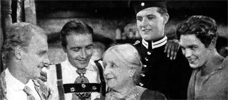
Four Sons
1928 -
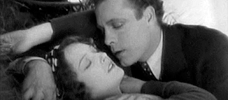
The Crowd
1928 -
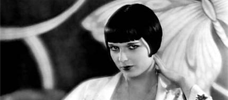
A Girl in Every Port
1928 -
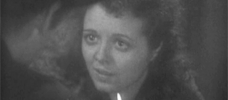
Street Angel
1928 -

The Patsy
1928 -
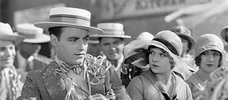
Lonesome
1928 -

Our Dancing Daughters
1928 -
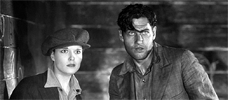
Beggars of Life
1928 -
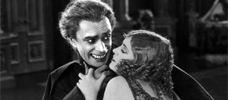
The Man Who Laughs
1928 -

The Docks of New York
1928 -
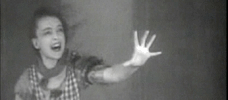
The Wind
1928 -
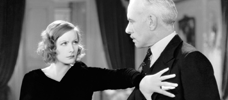
A Woman of Affairs
1928 -
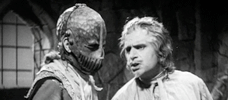
Iron Mask
1929 -
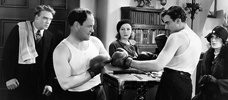
The Single Standard
1929 -

City Girl
1930 -
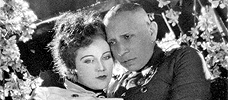
The Wedding March
1928
We don’t do comments anymore, but you may contact us here or find us on Twitter or Facebook.



